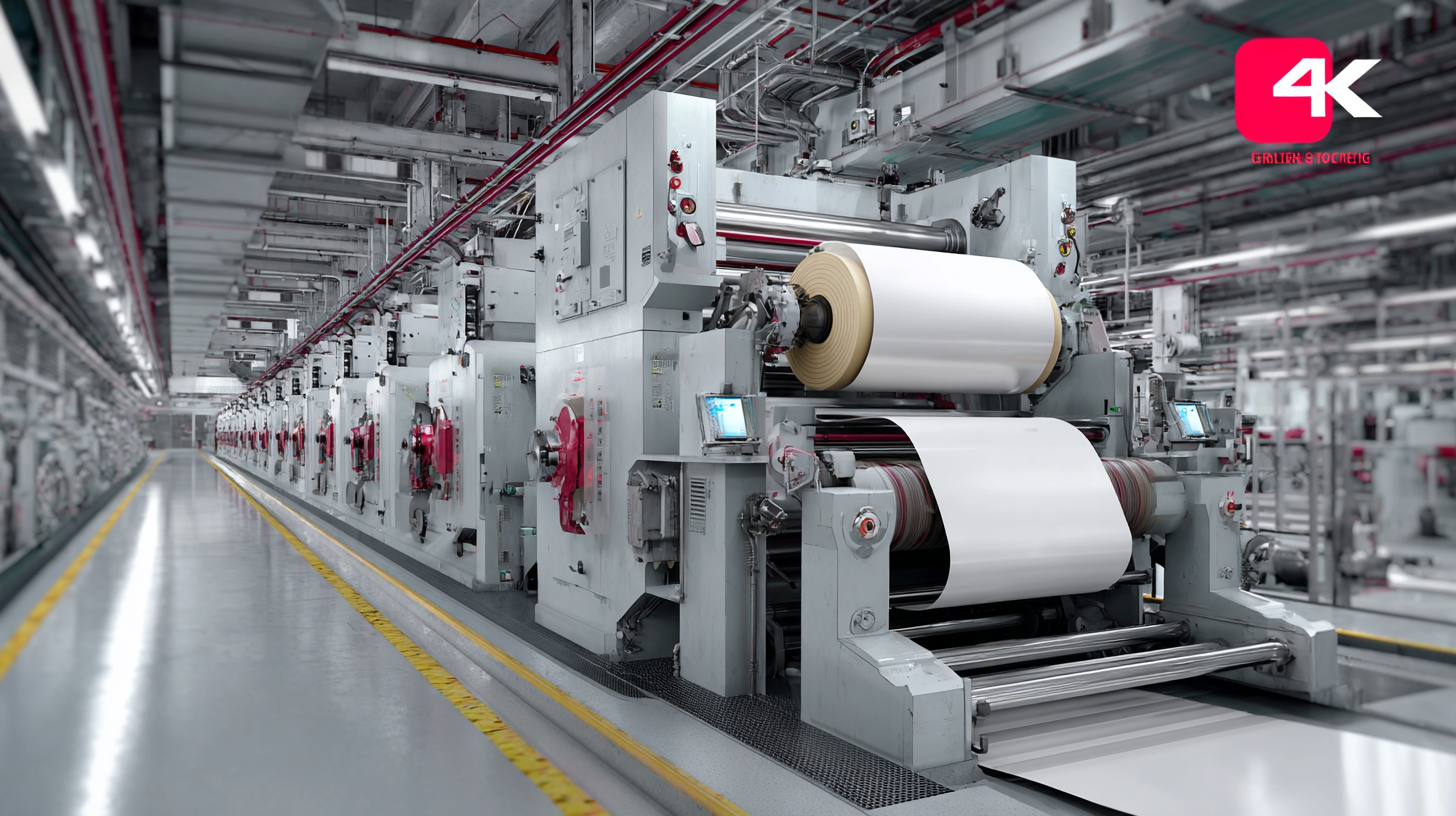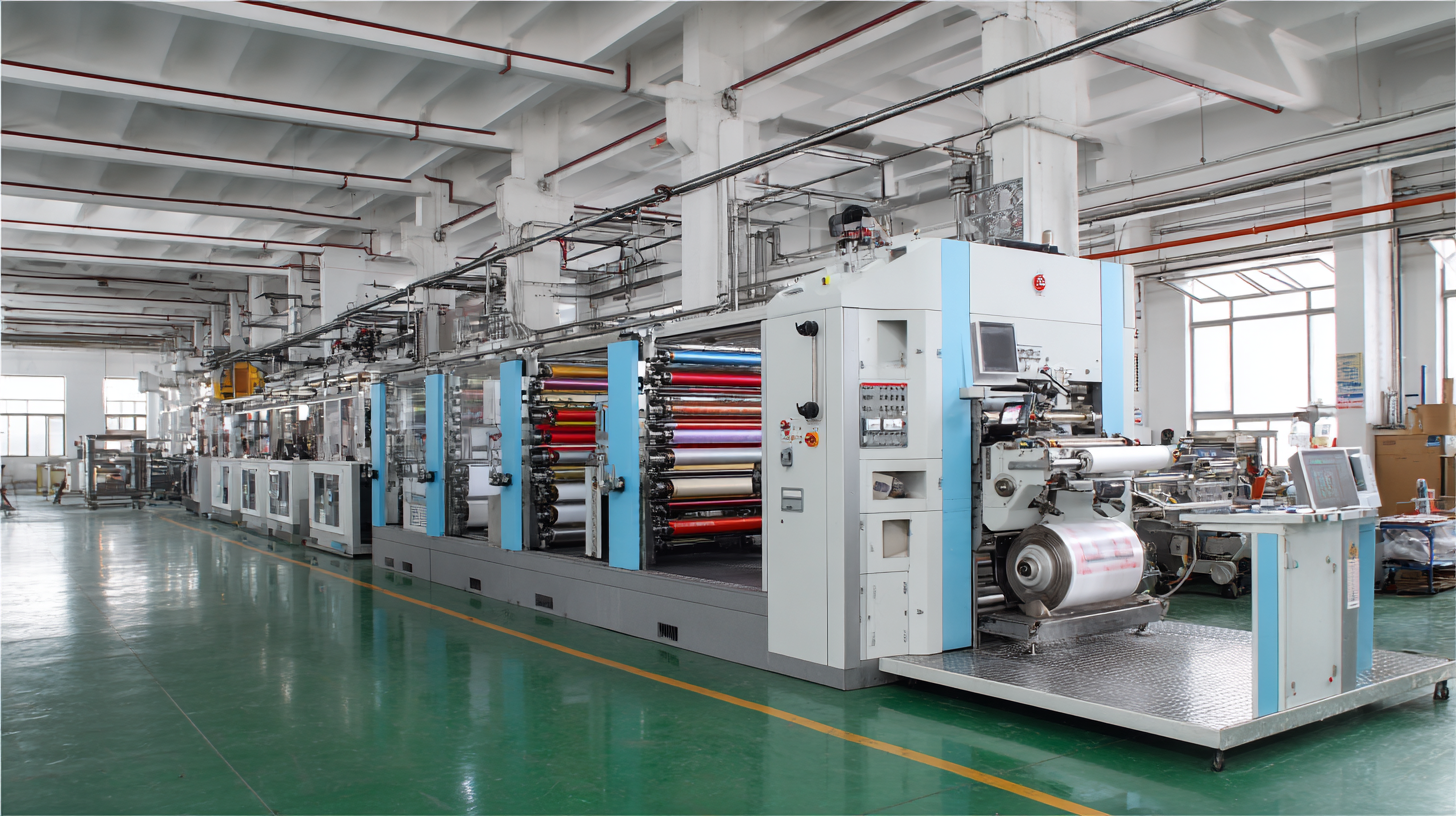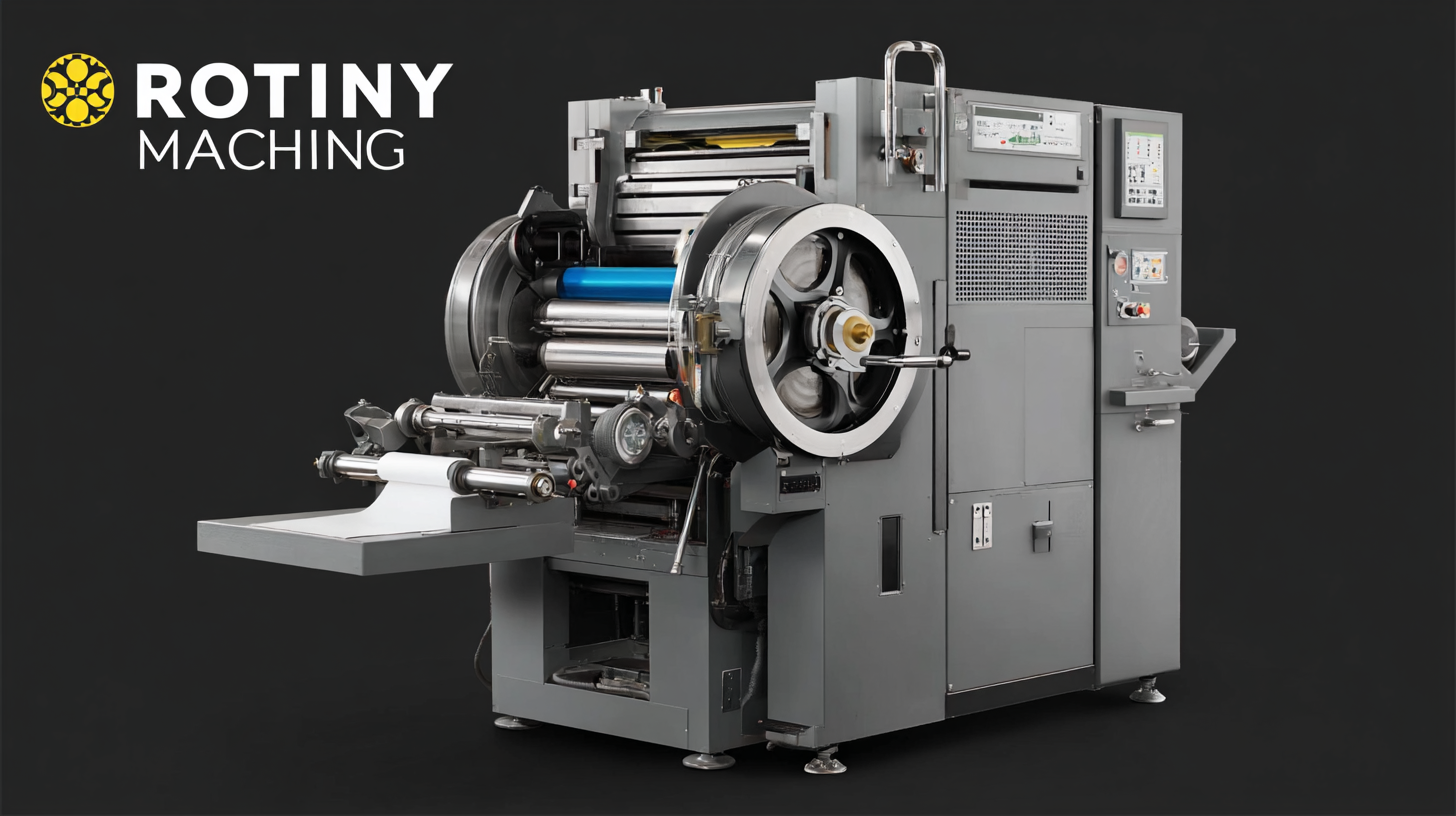In the ever-evolving landscape of the printing industry, the demand for high-quality Rotary Printing Machines has surged, driven by the need for efficiency and versatility in production. According to a recent market research report by Smithers, the global printing market is expected to reach $450 billion by 2026, with rotary printing being a significant contributor due to its ability to produce large volumes of high-quality prints in a cost-effective manner.
 These machines not only enhance speed and productivity but also support a wide range of substrates, making them indispensable for packaging, labels, and commercial printing. As businesses strive to stay competitive, discovering quality suppliers of Rotary Printing Machines becomes crucial, ensuring that they not only meet operational needs but also align with sustainability goals and technological advancements.
This blog will delve into essential insights and tips for sourcing the best Rotary Printing Machines, empowering companies to make informed decisions in their pursuit of excellence.
These machines not only enhance speed and productivity but also support a wide range of substrates, making them indispensable for packaging, labels, and commercial printing. As businesses strive to stay competitive, discovering quality suppliers of Rotary Printing Machines becomes crucial, ensuring that they not only meet operational needs but also align with sustainability goals and technological advancements.
This blog will delve into essential insights and tips for sourcing the best Rotary Printing Machines, empowering companies to make informed decisions in their pursuit of excellence.
In the highly competitive rotary printing machines market, the significance of partnering with quality suppliers cannot be overstated. According to a recent report by Smithers Pira, the demand for rotary printing machines is projected to grow at a compound annual growth rate (CAGR) of 4.5% over the next five years. Quality suppliers not only provide reliable machinery but also enhance overall production efficiency, ensuring that businesses can meet the rising demands of their customers.
When sourcing suppliers, companies should prioritize those with a proven track record of quality and innovation. Research indicates that organizations working with high-quality suppliers experience a 20% reduction in operational costs and 25% less downtime. Establishing strong relationships with these suppliers can lead to improved product development cycles and access to cutting-edge technology.
**Tip:** Evaluate potential suppliers based on their industry certifications and customer testimonials. Engaging in quality audits can also help ensure they meet the strict standards required for rotary printing machinery. Additionally, consider building a strategic partnership that encourages continuous improvement and collaboration for sustained success in the market.
When sourcing rotary printing machines, evaluating key features such as rotary speed (RPM) is crucial for ensuring optimal performance. High rotary speeds often translate to increased productivity and efficiency in printing processes. For instance, machines capable of operating at speeds above 300 RPM can significantly enhance throughput, making them essential for high-volume printing applications. Additionally, improvements in microstructure and mechanical properties of materials used in rotary printing interfaces can further enhance machine durability and output quality.
The latest advancements in technology highlight the importance of selecting machinery that integrates advanced sensor systems. These systems provide real-time feedback on operational efficiency and product quality during printing processes. Furthermore, a recent study indicates that additively manufactured components can offer superior strength and ductility after specific heat treatments, enhancing the mechanical properties of rotary printing machine parts. As the industry evolves, understanding and leveraging these technological advancements will be key in selecting the best rotary printing machines for your business.
| Feature | Description | Importance | Rating (1-10) |
|---|---|---|---|
| Print Speed | The speed at which the machine can print, typically measured in meters per minute (m/min). | High print speed reduces production time. | 9 |
| Ink Compatibility | Types of inks the machine can use, including water-based, solvent-based, and UV inks. | Versatility in ink usage expands application possibilities. | 8 |
| Print Quality | The level of detail and color accuracy the machine can achieve. | Critical for product appeal and customer satisfaction. | 10 |
| Ease of Use | User-friendly design and controls that minimize training needs. | Facilitates faster operation and reduces error rates. | 7 |
| Maintenance Requirements | Frequency and complexity of maintenance tasks required. | Lower maintenance leads to reduced downtime and costs. | 6 |
| Cost Efficiency | Assessment of overall costs versus output and productivity. | Directly impacts profitability. | 8 |
When sourcing rotary printing machines, identifying reliable supplier characteristics is crucial for ensuring quality and efficiency in the printing industry. A recent study emphasized the importance of multi-directional relationships in supply chains, which significantly enhance performance. Specifically, firms that prioritize strong, reciprocal interactions with their suppliers report a 30% reduction in operational risk, underscoring the value of collaboration in achieving stability and reliability (Research Paper, 2023).

It’s also essential to evaluate suppliers based on their ability to adapt and innovate. The integration of advanced technologies, such as 3D printing in construction, has demonstrated that suppliers who embrace innovation can significantly alter supply chain dynamics and improve service delivery. According to recent findings, companies that leverage technology effectively can see a 25% increase in customer satisfaction, highlighting the competitive edge that agile suppliers can offer. Evaluating suppliers not just on pricing, but on the quality of their relationships and their capacity for innovation, equips buyers with the right tools to enhance their supply chain efficiency and achieve better outcomes.
As the rotary printing industry adapts to the trends emerging in 2025, innovations are playing a crucial role in enhancing efficiency and sustainability. According to a recent report by Smithers Pira, the global market for rotary printing technology is expected to grow by 4% annually, driven by advancements in digital integration and eco-friendly materials. This shift towards more sustainable solutions has prompted manufacturers to explore innovative inks and substrates, aligning with the increasing demand for environmentally responsible printing options.
Tip 1: When sourcing rotary printing machines, consider suppliers that invest in R&D for sustainable materials. Collaborating with innovators can help you stay ahead in meeting eco-regulatory standards and customer expectations.
Automation is another key trend that is reshaping the rotary printing landscape. The incorporation of AI and data analytics streamlines the production process, minimizes waste, and enhances product quality. Industry studies have shown that automation can reduce production time by up to 30%, significantly impacting profitability.
Tip 2: Look for suppliers that offer integrated automation solutions. This can provide you with not only cost savings but also better flexibility in responding to market demands.
The continued evolution of rotary printing technologies presents a wealth of opportunities to improve production capabilities while adhering to shifting industry standards. By understanding these trends and collaborating with the right suppliers, businesses can position themselves for success in the increasingly competitive market.
This chart illustrates the quality scores assigned to various potential suppliers of rotary printing machines, emphasizing the importance of quality in sourcing decisions as the industry adapts to trends in 2025. The data demonstrates the varying levels of quality, which is crucial for making informed sourcing choices.
In the pursuit of sourcing rotary printing machines, sustainable sourcing practices have become a focal point for businesses looking to enhance operational efficiency while minimizing their environmental footprint. With the rise in eco-conscious consumerism, stakeholders in the printing industry must prioritize suppliers who adhere to sustainable principles. According to industry reports, 70% of consumers are willing to pay a premium for products that are environmentally responsible. This statistic underscores the importance of selecting suppliers who prioritize sustainable materials and energy-efficient technologies.
As companies explore the landscape for potential rotary printing machine suppliers, it is crucial to consider their commitment to sustainability. Suppliers that implement practices such as waste reduction, recycling programs, and using renewable energy not only contribute to environmental goals but also enhance the overall brand image of their partners. For instance, S Kumar's recent success in India highlights how mastering sustainable innovation can lead to significant market advancements, evidenced by their record installations of advanced rotary machines in 2024.
Tips for Sustainable Sourcing:

